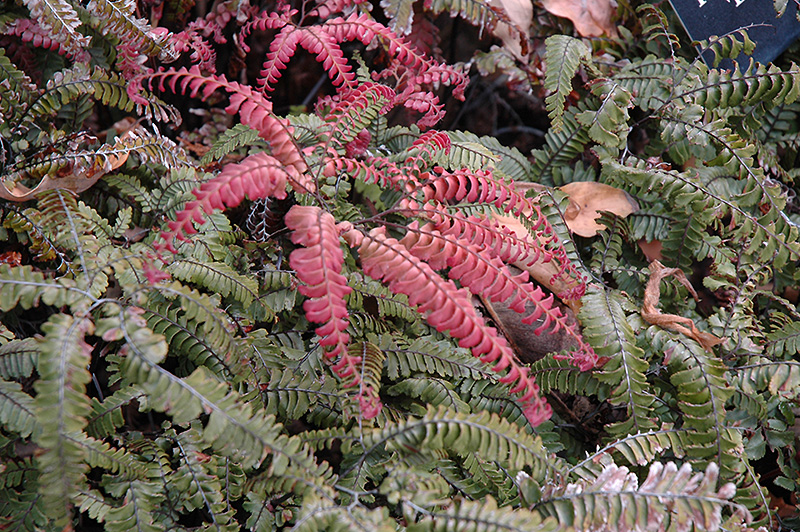Height: 24 inches
Spread: 12 inches
Sunlight:
![]()
![]()
Hardiness Zone: 6b
Other Names: Rosy Maidenhair Fern, Five Fingered Jack
Description:
This interesting crinkled fern creates a beautiful effect when massed with new growth emerging reddish-brown, later becoming green; this fern will remain evergreen in zone 7 and up and winter deciduous from 6b down to 5
Ornamental Features
Rough Maidenhair Fern is primarily valued in the garden for its cascading habit of growth. Its crinkled ferny compound leaves emerge brick red in spring, turning grayish green in color. As an added bonus, the foliage turns a gorgeous yellow in the fall.
Landscape Attributes
Rough Maidenhair Fern is an herbaceous evergreen fern with a shapely form and gracefully arching fronds. It brings an extremely fine and delicate texture to the garden composition and should be used to full effect.
This is a relatively low maintenance plant, and usually looks its best without pruning, although it will tolerate pruning. Deer don't particularly care for this plant and will usually leave it alone in favor of tastier treats. It has no significant negative characteristics.
Rough Maidenhair Fern is recommended for the following landscape applications;
- Mass Planting
- Rock/Alpine Gardens
- General Garden Use
- Groundcover
- Naturalizing And Woodland Gardens
Planting & Growing
Rough Maidenhair Fern will grow to be about 24 inches tall at maturity, with a spread of 12 inches. Its foliage tends to remain dense right to the ground, not requiring facer plants in front. It grows at a slow rate, and under ideal conditions can be expected to live for approximately 15 years. As an evegreen perennial, this plant will typically keep its form and foliage year-round.
This plant does best in partial shade to full shade. Keep it well away from hot, dry locations that receive direct afternoon sun or which get reflected sunlight, such as against the south side of a white wall. It prefers to grow in moist to wet soil, and will even tolerate some standing water. It may require supplemental watering during periods of drought or extended heat. It is not particular as to soil pH, but grows best in rich soils. It is highly tolerant of urban pollution and will even thrive in inner city environments, and will benefit from being planted in a relatively sheltered location. Consider applying a thick mulch around the root zone over the growing season to conserve soil moisture. This species is not originally from North America, and parts of it are known to be toxic to humans and animals, so care should be exercised in planting it around children and pets. It can be propagated by division.


